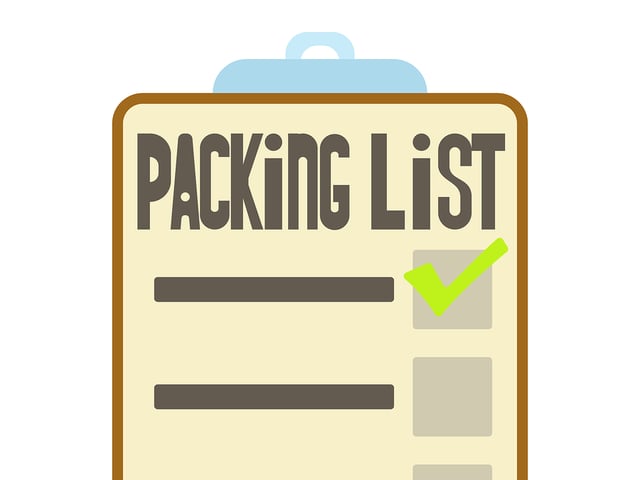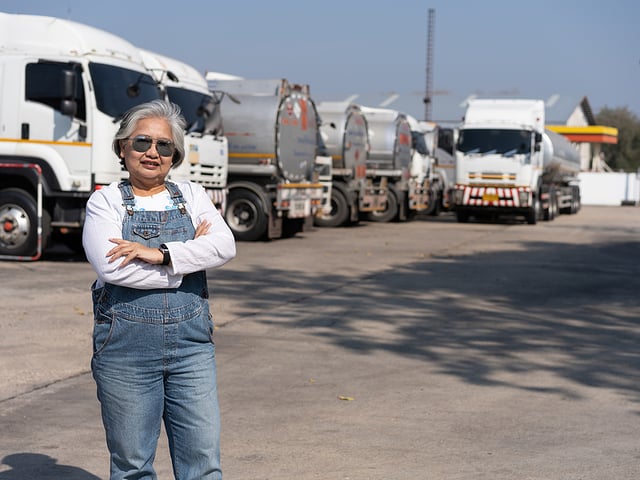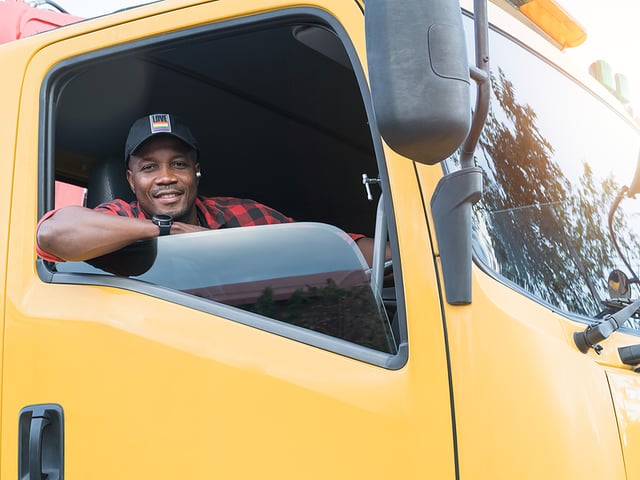
A Trucker’s Packing List
Besides tools and food, which are discussed in the links given below, there is a laundry list of things that will help you be a competent, organized, and happier truck driver. Instead of working on a list from scratch and learning as you go, try using the following suggestions and modify them to fit your personal needs. You can even copy and paste it somewhere you can edit it (your phone?) or print it out if you function better with pencil and paper. So, let’s get packing!
Route Planning and Paperwork
- some sort of case to keep your maps and paperwork organized, clean, and dry— and possibly, small enough to shove into your tool duffle (I use a leather briefcase, which is overkill.)
- map—[Truck maps are specialized—200 pages, with one page for every state (big states get two pages) and small maps for that state’s biggest cities. In the back, they list which roads that trucks can’t drive on, information on bridge-laws, etc.) You should replace your map every 3–4 years. A deluxe, laminated, spiral-bound map is about $40. A soft cover, paper map is about $20. Keep in mind that if the interior of your tractor gets to 120°F, the glue holding all of your softcover books will melt, and all the pages in every book in the tractor (including a soft cover map) will fall out. (I just happen to know that.)
- notebook for load information, including load number, addresses, weight of load, weight of truck, route you are going to take, etc. (Cheap ones are usually provided by the trucking company.)
- ramp book.—a list of truck stops by state, Interstate number, then exit number that also lists fuel, food, lodging, and shopping. This comes in very handy when looking for a parking spot. Get one with wide margins, so you can make your own notes (e.g., “lots of parking,” “nice lounge,” “horrible food,” “near a Waffle House™,” “bad neighborhood,” etc.)
- GPS—or, App on your phone (I don’t know how we survived without GPS.)
- money—find details about the need for carrying cash in the blog,
CDL Driving: Keeping Cash in the Truck.
Information on doing the actual route planning can be found in the blog,
CDL Trip Plan: How to Prepare for the Journey
Personal
- food—I detail the need for carrying food in the blog,
Truckers: Meet Peanut Butter and Spam™
- mini fridge—For $100–$120, you can get a 12-volt, 40-quart mini fridge that will keep your food from spoiling and keep your beverages cool-ish. Mini fridges are much more expensive in a truckstop.
- 33-gallon trash bags (also known as “the backpacker’s friend)—extremely handy clothes can be kept dry inside. (On the road, I would rather keep my clothes “tacky and dry” than “fashionable and wet.”) And a trash bag with a few holes cut in it can be made into a rain poncho.
- plastic grocery-store bags, useful for hauling trash. Also, two shopping bags can be used to wrap a 5th wheel lock, keeping the dirty grease from touching the inside of your tractor.
- toilet paper and a shovel, or some other tool for digging a hole. (A hammer would work.) None of which, you will hopefully ever need. Find the explanation in the blog,
CDL Driver: Tools You Need to Carry, under “Doing It Wrong.”
- blankets and pillows
- sheets— are a problem. Beds in trucks are non-standard sizes. When you have been assigned to a truck, measure the mattress and get the proper fitted sheets at a truck stop. Or, you can do what I do. I don’t use fitted sheets—I use a flat sheet and fold them onto the mattress with hospital corners.
- 12 volt fans for the berth. It gets hot in the berth, even when it is cool-ish outside. I use two—one by my feet, blowing air from the vent up toward my face—one blowing air directly on my face.
Entertainment
- TV or computer so you can watch movies and play games
- books
- hobby material
Clothes
- a large duffle to hold all your clothes
- enough clothes for three weeks
- laundry soap
- sturdy boots (preferably waterproof)
- snow boots (rubber boots)
- tennis shoes
- heavy coat
- light coat
- leather work gloves
- snow gloves
- rain gear
- sun hat
- rain hat
Summary
-
Don’t go crazy and buy everything on these lists in one go. Take your time. Accumulate things as they become available. My cheap, plastic tool kit—I found late one night in a truck stop somewhere in Texas—on clearance. It was an $80 kit, I got for 1/4 normal price because I was patient.
-
Duffles are better than hard sided suitcases. Duffles can fold flat and store easily.
-
I try to never have more with me than I can carry at one time. Even if it means dragging it behind me. If necessary, I can abandon some stuff without much stress. (More than once, I have left spare pillows and half a bottle of laundry soap for the next driver.) Once, in order to get to the airport, I gave away my mini fridge. I like being able to get from the truck to an airport, train station, bus stop, etc.—with all my stuff, in one trip. A couple of big duffles make that possible. (Or, if rushed, some 33-gallon trash bags.)
Note: Never abandon a truck or fail to deliver a load. Doing so will make it very difficult to get another driving job. If you must leave a company, give notice. If you can, give 2 weeks’ notice.
Keep Reading

Commercial Driver's License Test Blog
How Many Questions are on the CDL Permit Test?
Embarking on a career in commercial truck driving begins with a crucial…

Commercial Driver's License Test Blog
What are the Three Tests for the CDL Permit?
If you’re looking to embark on a career in truck driving, obtaining a C…

Commercial Driver's License Test Blog
How Much Does It Cost to Get a CDL?
The trucking industry dominates freight shipping. Trucks handle over 70…